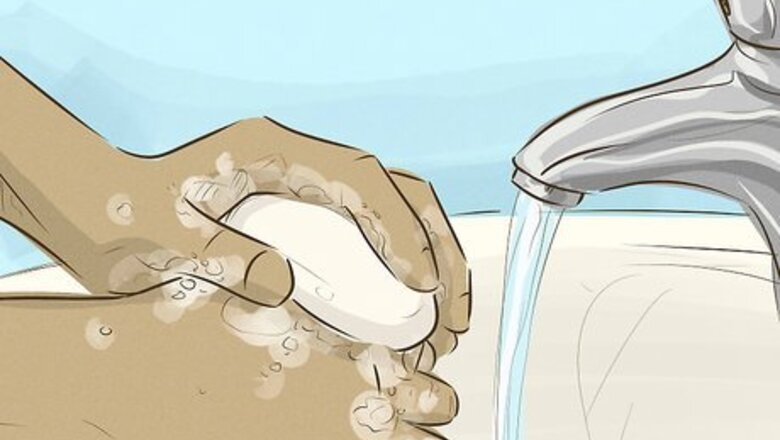
views
X
Research source
If you suspect an infection, contact your tattoo artist and doctor immediately.[2]
X
Expert Source
Grant LubbockTattoo Artist & Co-Owner, Red Baron Ink
Expert Interview. 22 October 2019.
Washing Your Tattoo
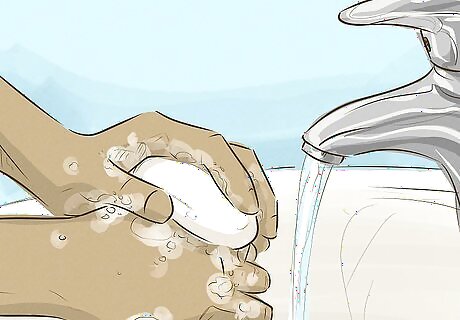
Wash your hands. Place your hands under clean, running water to get them wet. Squeeze soap into the palm of your hand. Rub your hands together until a lather forms. Scrub your palms, the back of your hands, between your fingers, and under your fingernails for at least 20 seconds. Rinse your hands with clean water and let them air dry, or dry them with a clean paper towel. Use the paper towel to turn the faucet off as well.
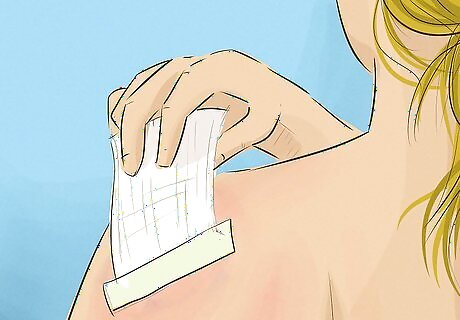
Take off your bandage after 24 hours. Wait one day before removing the bandage. Slowly remove the bandage in case it has stuck to the wound. It shouldn't if the tattoo artist properly applied Vaseline to the tattoo.
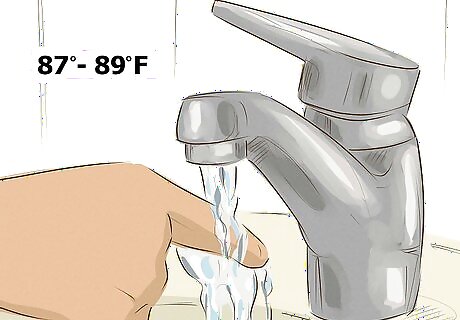
Turn the faucet on. Use a paper towel to do this so you can avoid contaminating your hands. Let the faucet run until the water is lukewarm (about 87 to 89 degrees Fahrenheit or 30 to 32 degrees Celsius). Make sure the water is not hot. Hot water can be painful. It can also cause your pores to open up, which can cause the ink to drain from your tattoo.
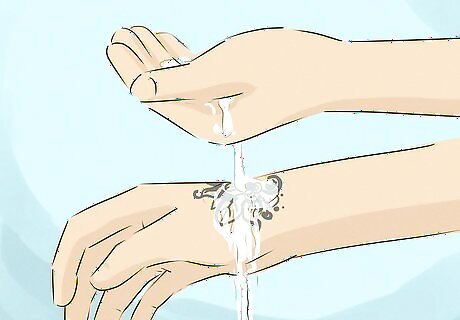
Use your hands to cup the water. Pour the water over your tattoo. Using a circular motion, gently rub your finger over your tattoo to wet the entire area. Do not place your tattoo directly under the running water. Since too much water can cause the ink to drain from your tattoo, only pour water over it once.
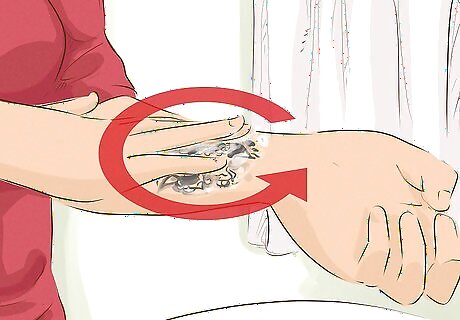
Apply a gentle soap. Make sure to use an alcohol and fragrance-free soap. Using your finger, gently rub the soap onto your tattoo in a circular motion. Lightly massage the soap into your tattoo until the majority of blood, ointment and plasma are removed. Do not force off pieces of blood and ink, as well as scabs that cannot be removed with gentle rubbing. Do not use a towel or washcloth to rub the soap into your tattoo. These are too abrasive and may contain bacteria that can infect it.
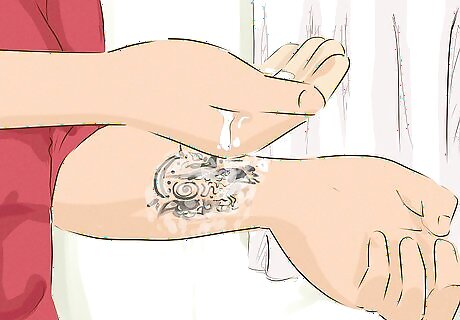
Rinse with water. Do this once your tattoo looks and feels clean. Use your hands to cup the water again. Pour the water over your tattoo. Make sure to rinse the area thoroughly until all soap and residue are removed.
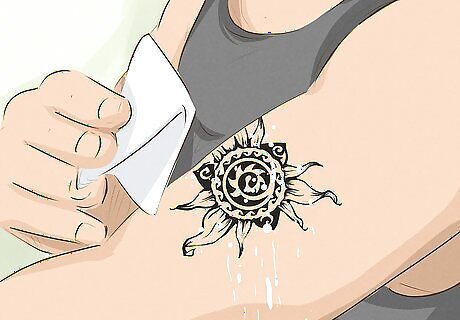
Dry your tattoo. Gently blot your tattoo with a clean paper towel. If the paper towel sticks to your tattoo, wet the area to remove it. Do not use a cloth or bath towel to do this. These may contain bacteria that can infect your tattoo.
Treating Your Tattoo
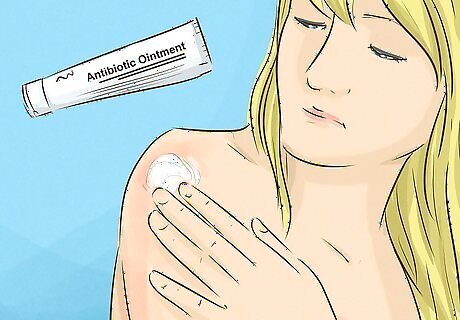
Use an antibacterial ointment for up to two days. When your tattoo is first healing, an antibiotic can help prevent infection and speed up the healing process. However, don't use it for more than one or two days because the cream can prevent oxygen from circulating around your healing skin, which is needed for the ink to seal. Apply the cream twice a day for up to two days.
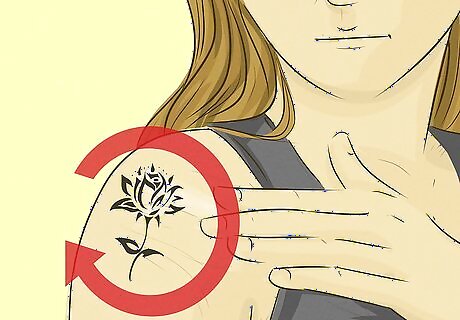
Apply a thin layer of unscented moisturizer. Do this when your tattoo is thoroughly dry. Using a small amount of cream, gently rub it over your tattoo with your fingers in a circular motion. Only apply a thin layer of cream so that your tattoo shines. Try to avoid applying cream over any scabs. If you applied too much cream, use a clean paper towel to blot and remove the excess cream. Plain, unscented creams are generally used to treat tattoos.
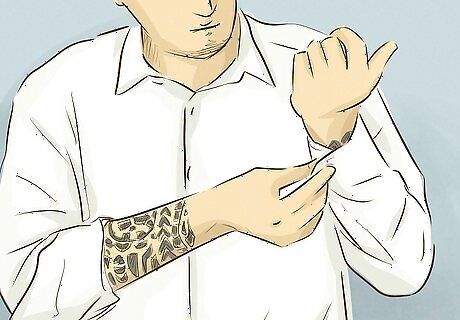
Leave your tattoo unbandaged. After you remove the bandage, do not apply another one. Your skin needs oxygen circulating around it to heal.
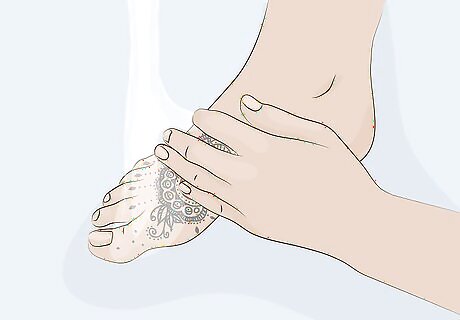
Clean twice daily for two weeks. Your tattoo will take two weeks to fully heal. Use the same procedure to wash and moisturize the tattoo. Each time you clean it, check to make sure that it is healing. Don't pick any scabs that form.
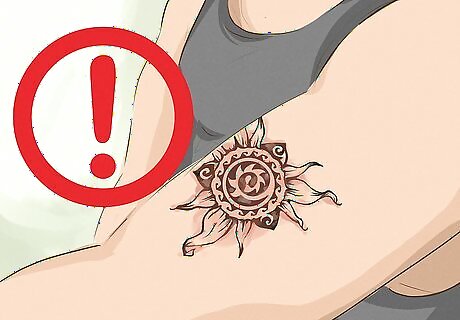
Contact a doctor if you suspect you have an infection. Your doctor will most likely prescribe a steroid or an antibiotic to treat the infection. Signs of an infection are: A very painful or hot to the touch tattoo after seven to ten days. A pimply or bumpy rash surrounding your tattoo. An extremely red, itchy and/or swollen tattoo after seven to ten days. Blistering or unusual scabbing. Pimples or boils that exude pus. Continued bleeding after three nights, or red streaking. A fever and/or swollen lymph nodes.
Caring for the Tattoo
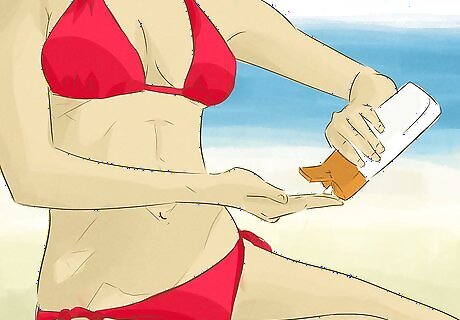
Protect against sun exposure. During the two weeks that your tattoo is healing, stay out of the sun. UV rays can fade the inks in your tattoo, and they are damaging to your skin. If you must go outside, apply a sunscreen with an SPF 30 or more at least 15 minutes before you go outside. You should also stay away from tanning beds.
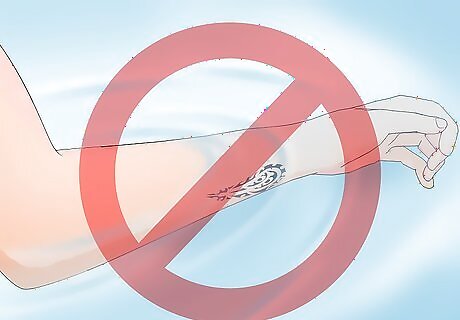
Avoid swimming. Don't submerge yourself in any kind of water because it can infect your tattoo. The water is teeming with germs and bacteria. Stay away from swimming pools, lakes, rivers, streams, ponds, hot tubs, and the ocean. You will need to avoid swimming until your tattoo is fully healed.
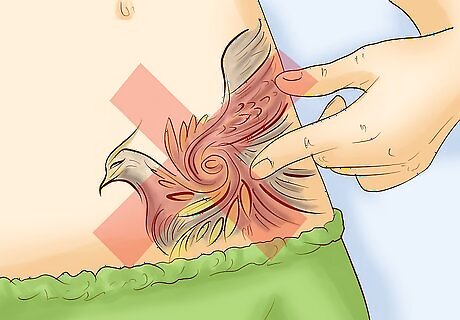
Avoid picking or scratching the tattoo. Don't pick scabs or scratch itchy parts. Not only will it harm the healing process, but you could infect the tattoo with germs under your nails. You should also avoid wearing clothing that could irritate or stick to the tattoo. If you can, leave the tattoo uncovered.
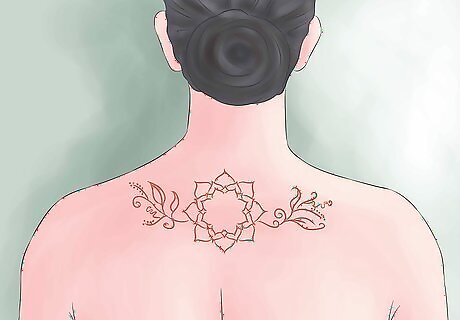
Allow two weeks for your tattoo to heal. Be careful with your tattoo for the full two weeks after you get it, even if you think it looks healed. Infections are serious, so don't risk getting one by stopping your care early or engaging in risky activities, such as swimming.




















Comments
0 comment